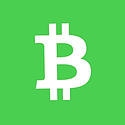USD/JPY Exchange rate
Editors’ Picks
AUD/USD extends its upside above 0.6600, eyes on RBA rate decision

The AUD/USD pair extends its upside around 0.6610 during the Asian session on Monday. The downbeat US employment data for April has exerted some selling pressure on the US Dollar across the board. Investors will closely monitor the Reserve Bank of Australia interest rate decision on Tuesday.
EUR/USD: Optimism prevailed, hurting US Dollar demand

The EUR/USD pair advanced for a third consecutive week, accumulating a measly 160 pips in that period. The pair trades around 1.0760 ahead of the close after tumultuous headlines failed to trigger a clear directional path.
Gold bears take action on mixed signals from US economy

Gold price fell more than 2% for the second consecutive week, erased a small portion of its losses but finally came under renewed bearish pressure. The near-term technical outlook points to a loss of bullish momentum as the market focus shifts to Fedspeak.
Bitcoin Cash could become a Cardano partnerchain as 66% of 11.3K voters say “Aye”

Bitcoin Cash is the current mania in the Cardano ecosystem following a proposal by the network’s executive inviting the public to vote on X, about a possible integration.
Week ahead: BoE and RBA decisions headline a calm week

Bank of England meets on Thursday, unlikely to signal rate cuts. Reserve Bank of Australia could maintain a higher-for-longer stance. Elsewhere, Bank of Japan releases summary of opinions.
Majors
Cryptocurrencies
Signatures
USD/JPY
USD/JPY is the abbreviation for the U.S. dollar and Japanese yen cross. Trading this currency pair is known as the "gopher". The USD/JPY tends to have a positive correlation with the USD/CHF and USD/CAD, they all use the U.S. dollar as the base currency. The Yen is sensitive to factors related to Asian stock exchanges and due to the interest rate differential with other major currencies, it is also sensitive to any change affecting the so-called "Carry Trade".
HISTORICAL HIGHS AND LOWS
- Fixed Rate: (from 1944 to 1971) After World War II, the Yen lost its value. To stabilize, the exchange rate of it was fixed at ¥360 per $1 as part of the Bretton Woods system that set an obligation for each country to adopt a monetary policy that maintained the exchange rate by tying its currency to gold.
- Free Float Rate: When the Bretton Woods system ended in 1971, the USA terminated convertibility of the US dollar to gold. The JPY became undervalued and was allowed to float. Since then, the pair reached its highest price in January 1973 at 301.15¥/USD and its minimum in October 2011 at 72¥/USD.
USD/JPY FORECAST 2024
The Yen could receive support from the BoJ if it indicates a shift toward ending its ultra-loose monetary policy stance, potentially through a rate hike that would mark the end of seven years of negative rates. Governor Ueda and Deputy Governor Hino offered some comments about it in December. Rumors and speculations in that direction would trigger momentum for the Yen. Read more details about the forecast.
MOST INFLUENTIAL CURRENCIES FOR USD/JPY
The USD/JPY pair can also be impacted by other currencies, in particular the Euro (for being a prominent commercial partner) and the Chinese Yuan Renminbi (for being the other main Asian currency).This group also includes EUR/USD,GBP/USD, AUD/USD, USD/CHF, NZD/USD, USD/CAD, GBP/JPY and EUR/JPY
MOST INFLUENTIAL ORGANIZATIONS FOR USD/JPY
The organizations that most impact the USD/JPY are the Federal Reserve of the United States and the Bank of Japan (BoJ).
- About the Fed: The Federal Reserve System is the central banking system of the United States of America. It was created on December 23, 1913, with the enactment of the Federal Reserve Act, after a series of financial panics led to the desire for central control of the monetary system in order to alleviate financial crises.
- About the BoJ: The Bank of Japan is the central bank of Japan. The bank is often called Nichigin for short. The Bank's objectives are to issue banknotes and to carry out currency and monetary control and to ensure smooth settlement of funds among banks and other financial institutions, thereby contributing to the maintenance of the stability of the financial system.
The interest rate differential between the Fed and the BoJ will affect the value of these currencies when compared to each other. For example, when the Fed intervenes in open market activities to make the USD stronger, the value of the USD/JPY cross could increase, due to a strengthening of the U.S. dollar when compared to the Japanese yen.
In Japan, deflation has been a persistent threat for many years, and the BOJ has pursued a policy of very low rates in the hopes of stimulating demand and economic growth; at various points in the 2000s, real rates in Japan were actually slightly negative.
The US Government is as well an institution of great importance for this pair: events as administration statements, new laws and regulations or fiscal policy can increase or decrease the value of the US Dollar and the currencies traded against it. The same happens of course for the Japanese Government, in particular, all the speeches of the Primer Minister Fumio Kishida, who replaced Yoshihide Suga in October 2021.